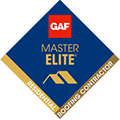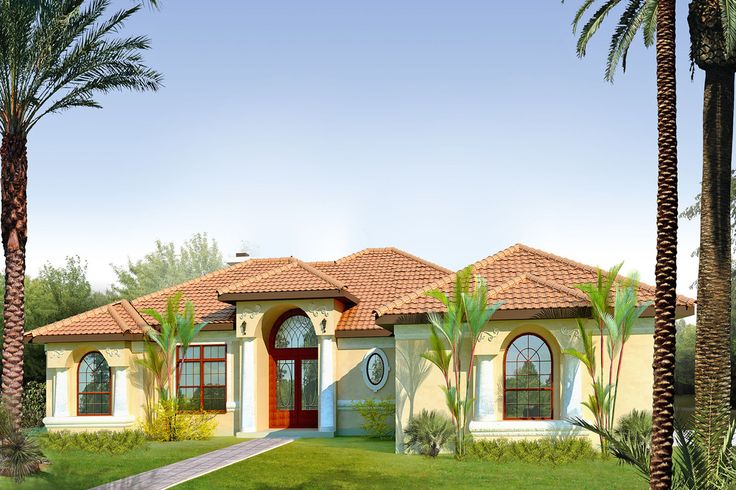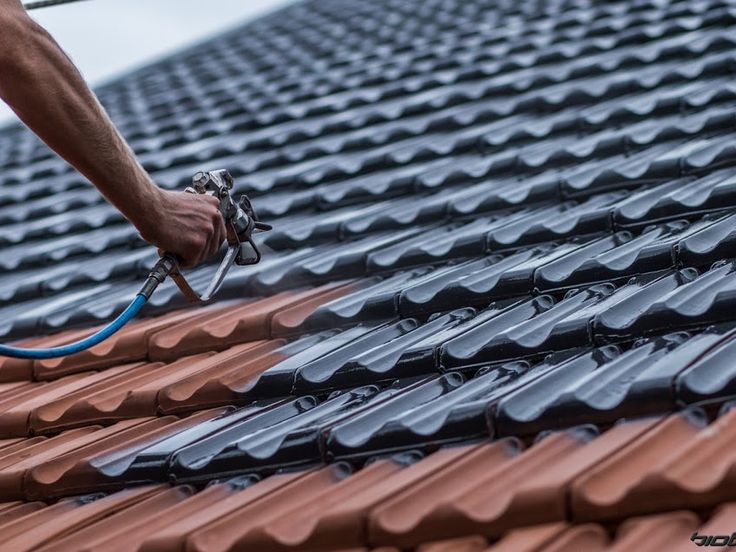Roofing is one of the biggest investments you can make for your home or business, and picking the right material affects how long your roof lasts and how nice it looks. Tiling a Roof with Clay Tiles the many options, using clay tiles for your roof has been a top choice for a long time because they look great, last a long time, and handle weather well. For homeowners in areas like California, Nevada, Arizona, and others, clay tiles are a popular option for both homes and buildings.
This article covers all the important things you need to know about using clay tiles on your roof.
We’ll talk about the advantages, how the process works, how much it might cost, and how to take care of your roof. We’ll also explain why Sierra Roof Inc. is a reliable company for clay tile roofing solutions.
Why Choose Clay Tiles for Your Roof?
Clay tiles have earned their reputation as one of the most sought-after roofing materials for homeowners and property developers alike. Their combination of beauty, strength, and practicality makes them a premium choice for anyone considering tiling a roof with clay tiles. Below is an in-depth look at the qualities that set clay tiles apart and why they remain unmatched in performance and aesthetic value.
Timeless Aesthetic Appeal
Homeowners often pick clay tiles because of their timeless and stylish look. These tiles have a warm, natural feel that isn’t easy to find in other roofing materials. They come in a range of earthy colors, like bright reds, soft browns, and light beiges, which blend well with many different house styles.
Clay tiles work especially well with homes that have Spanish, Mediterranean, Tuscan, or Southwestern designs.
They match the relaxed, sunlit look of these styles perfectly. Even for modern or contemporary homes, selecting the right clay tiles can add a nice contrast and boost the home’s first impression. Since clay tiles don’t lose their color easily, they stay bright and lively for many years, keeping your home looking stylish and welcoming.
In areas where keeping the old architectural style is important, like historic neighborhoods, clay tiles are often the best choice. They have a real, handmade feel that keeps the past alive while also being strong and long-lasting today.
Superior Durability and Longevity
Clay tiles are known for being very durable. When installed correctly, a clay tile roof can last between 50 and 100 years, and sometimes even more. This is longer than most other types of roofing, such as asphalt shingles or wood shakes. Because they last so long, they need to be replaced less often, which saves money over time.
Clay tiles excel in withstanding harsh weather conditions:
- Extreme Heat: They do not warp or soften under prolonged exposure to sunlight.
- Heavy Rain and Moisture: The natural composition of clay makes them resistant to rot and water damage.
- High Winds: When secured correctly, clay tiles can endure strong gusts without dislodging.
- Fire Resistance: Clay is naturally non-combustible, adding a layer of safety to your home.
For homeowners in hot and sunny climates like California or the Southwest, tiling a roof with clay tiles ensures protection against intense UV exposure while maintaining structural integrity for decades.
Energy Efficiency
Energy efficiency is another major benefit of clay tile roofing. Clay tiles have natural thermal insulating properties, meaning they help regulate indoor temperatures throughout the year. Here’s how they contribute:
- Heat Reflection: The curved shapes of many clay tiles allow air circulation beneath them, reflecting and dissipating heat before it reaches the roof deck.
- Cooler Summers: Homes stay cooler in warmer months, reducing the need for constant air conditioning.
- Warm Winters: Their insulating properties also help retain heat during colder months, contributing to balanced energy use.
By improving a home’s energy efficiency, clay tiles reduce utility bills and promote a more eco-friendly lifestyle an increasingly important factor for environmentally conscious homeowners.
Low Maintenance
Unlike many roofing materials that require frequent repairs or treatments, clay tile roofs are known for their low-maintenance nature. Once properly installed by experienced professionals, routine upkeep is minimal:
- Periodic Inspections: Checking for occasional cracked or displaced tiles, especially after severe weather.
- Simple Cleaning: Removing debris, leaves, or moss using soft brushes or low-pressure washing to avoid damaging the tiles.
- Long-Term Reliability: Clay tiles resist pests, rot, and mold, which reduces ongoing maintenance costs.
Because clay tiles are so durable, homeowners typically spend far less over the roof’s lifetime on repairs and replacements compared to materials like asphalt shingles. This low-maintenance advantage is a significant reason why tiling a roof with clay tiles is a smart long-term investment.
Preparing for Tiling a Roof with Clay Tiles
Before starting the installation, proper planning is essential. Here’s what professionals at Sierra Roof Inc. consider during the preparation phase:
Roof Structure Assessment
Clay tiles are heavier than other materials. The roof deck and underlying structure must be inspected to confirm they can support the added weight. In some cases, reinforcement may be necessary.
Choosing the Right Clay Tiles
Clay tiles come in different profiles, including Spanish S-tiles, flat tiles, and barrel tiles. Each style offers distinct aesthetic and functional benefits. Color selection is also important to complement your home’s exterior design.
Local Building Codes and Permits
Professional roofing companies ensure compliance with local regulations. At Sierra Roof Inc., we handle all permits and adhere to regional building codes to guarantee safety and quality.
Step-by-Step Process of Tiling a Roof with Clay Tiles
Installing clay tiles requires careful work, skill, and focus. At Sierra Roof Inc. , we use a step-by-step method to make sure each roof looks great and can withstand tough weather for many years. Here’s a detailed look at each part of the process.
Removing Old Roofing Materials
The installation starts by completely removing the old roofing. If the roof was made of asphalt shingles, wood shakes, or old clay tiles, every part has to be taken off to show the roof deck. This is important because it lets roofers check the structure below for any damage and makes sure the new clay tiles have a clean, strong surface to sit on.
While removing the old materials, all trash, nails, and the old roofing layer are taken out carefully. The area is kept tidy to avoid hurting the garden or the home. Removing everything properly also helps reduce the weight, which matters because clay tiles are much heavier than other roofing types.
Inspecting and Repairing the Roof Deck
Once the old roofing material is removed, the roof deck is inspected for structural integrity. Over time, moisture infiltration or age-related wear can cause decking to rot, warp, or weaken. Any compromised sections must be repaired or replaced to ensure the new clay tile roof performs optimally for decades.
Roofers look for:
- Signs of water damage or mold
- Soft or sagging areas in the plywood or sheathing
- Loose or deteriorated fasteners and supports
By addressing these issues early, homeowners avoid future problems such as leaks, sagging tiles, or premature roof failure. A sound roof deck is essential because it serves as the foundation for the entire clay tile installation.
Installing Underlayment and Battens
After the roof deck is fixed, the next thing is putting down a good underlayment. This waterproof layer is important to stop water from getting in during heavy rain or strong winds. It helps protect the roof even if a tile breaks or moves.
In most clay tile roofs, workers also put up battens small wooden strips that hold the tiles in place and make sure there is room for water to drain and air to move.
These battens are attached carefully to the roof deck so they fit the shape of the tiles and follow the slope.
The combination of underlayment and battens ensures:
- Enhanced waterproofing
- Correct tile alignment
- Improved roof ventilation (reducing heat buildup beneath tiles)
This step is crucial for both performance and longevity when tiling a roof with clay tiles.
Laying the Clay Tiles
Once the underlayment and battens are set, the real work of placing the clay tiles starts. Skilled installers carefully work from the bottom edge of the roof upward, placing each row so they overlap slightly. This helps keep water out and prevents leaks. Starting at the eaves makes sure water flows off the roof naturally without getting underneath the tiles.
Each tile is fastened with nails, screws, or clips, depending on how steep the roof is and what kind of tile is being used.
It’s important to be precise because if tiles aren’t placed right, they might look uneven or leave gaps that could weaken the roof or make it look bad.
Clay tiles come in different shapes, like S-tiles, flat tiles, and barrel tiles, and each type needs to be arranged in a certain way. At Sierra Roof Inc. , we make sure every tile is placed exactly right for both looking good and holding up strong.
Cutting and Fitting Around Roof Features
Every roof has different parts, like chimneys, skylights, valleys, and vents, and each needs to be handled carefully. Clay tiles have to be cut and shaped so they fit tightly around these areas without any spaces. If they don’t fit right, it can cause leaks, which is why this step is so important.
Roofers use special tools, such as wet saws, to make smooth cuts in the tiles. This helps the tiles stay strong and look good. They also put flashing around places where the roof goes through, like chimneys, to help water run off and keep the roof dry.
Ridge and Hip Installation
The ridge and hip tiles are the final parts added to the roof. These specially made tiles cover the tallest points and the sloped corners of the roof, making it look smooth and offering extra protection from water getting in.
Putting these tiles on correctly needs careful sealing and making sure they fit properly.
This step helps make the roof more resistant to weather and also improves how it looks. In traditional Mediterranean-style houses, ridge tiles often add a special decorative touch that finishes off the roof nicely.
Benefits of Professional Installation
Some home owners might think they can do roof work on their own, but putting up clay tiles on a roof isn’t something you can just tackle without help. Clay tiles are heavy, easy to break, and need careful handling to make sure they last and stay safe. Getting professionals like Sierra Roof Inc. to do the job ensures better results and helps keep your home protected in ways that trying to do it yourself can’t. Here’s why getting experts is so important:
Structural Safety
Installing clay tiles requires making sure the roof can support their heavy weight. Clay tiles are much heavier than options like asphalt shingles or metal sheets. If the roof isn’t strong enough, it could sag, crack, or even collapse over time.
Before starting the installation, experienced roofers check the roof’s frame and deck to see if they can handle the weight.
If they find any weak spots, they fix them first. This careful planning helps keep your home safe and prevents damage in the future. It also helps the roof stay strong and stable for many years.
Leak Prevention
Proper waterproofing is vital in clay tile roofing. While clay tiles are naturally water-resistant, the areas between tiles and around penetrations (chimneys, vents, skylights) are vulnerable to leaks if not sealed correctly.
A professional installation includes:
- High-quality underlayment for secondary waterproofing
- Flashing installation around vulnerable areas to redirect water
- Proper overlapping and spacing of tiles to prevent water intrusion
By following these industry best practices, professionals minimize the risk of leaks protecting your home from costly water damage and mold growth.
Warranty Protection
Most clay tile makers provide long-term warranties, sometimes lasting 50 years or longer. But there’s one important rule: the tiles have to be installed by certified or experienced professionals.
Going with a trusted company like Sierra Roof Inc. makes sure the installation fits the warranty rules. This helps protect your money and gives you confidence that both the tiles and the work are covered if something goes wrong.
Time and Cost Efficiency
At first glance, a DIY project may seem like a cost-saving opportunity. However, tiling a roof with clay tiles requires specialized tools, skills, and safety equipment. Without experience, DIY attempts often result in:
- Misaligned tiles that compromise waterproofing
- Accidental tile breakage, leading to higher material costs
- Extended project timelines, especially for complex roof shapes
Professional roofers complete the job efficiently and safely, minimizing disruptions to your daily life. Their expertise helps avoid costly mistakes and ensures the project stays within budget.
Clay Tile Roofing Services by Sierra Roof Inc.
At Sierra Roof Inc., we specialize in premium clay tile roofing solutions. Our services include:
- New Roof Installation: We design and install clay tile roofs tailored to your home’s architecture.
- Roof Replacement: Upgrade your old roof to durable clay tiles.
- Roof Repairs: Fix cracked or displaced tiles promptly to prevent further damage.
- Roof Maintenance: Routine inspections and cleaning to prolong your roof’s life.
- Custom Tile Matching: Perfect for historic homes or specific aesthetic requirements.
Serving clients across California and neighboring regions, we bring craftsmanship and attention to detail to every project.
Cost of Tiling a Roof with Clay Tiles
The cost depends on factors such as roof size, tile type, and labor. On average:
- Materials: $10–$20 per square foot.
- Installation: $5–$15 per square foot.
- Total Average: $15,000–$40,000 for a standard residential roof.
Investing in clay tile roofing offers unmatched long-term value due to its durability and low maintenance needs.
Common Problems and Solutions for Clay Tile Roofs
Clay tile roofs are famous for being very strong and looking great for a long time, but just like any roof, they can have problems as they get older. It’s important to know about these common issues and how to fix them so the roof keeps working well and lasts longer. At Sierra Roof Inc. , we help homeowners deal with these problems quickly and effectively, making sure their clay tile roofs stay in top shape all year long.
Cracked or Broken Tiles:
The Problem:
Clay tiles, while durable, can crack or break due to impact from falling branches, hail, or foot traffic during maintenance. Even minor cracks can allow water to seep beneath the tiles, leading to leaks and potential damage to the underlayment or roof deck.
The Solution:
Prompt replacement of damaged tiles is essential to prevent water infiltration. Professional roofers carefully remove the cracked tile without disturbing surrounding tiles and install a matching replacement to maintain the roof’s integrity and appearance. For widespread damage such as after a severe storm experts may recommend a full inspection to identify hidden issues.
Moss and Algae Growth:
The Problem:
In damp or shaded areas, clay tiles can develop moss, algae, or lichen growth over time. While this doesn’t always indicate structural damage, excessive growth can trap moisture, making tiles slippery and accelerating wear on the underlayment.
The Solution:
Eco-friendly moss removal treatments and gentle cleaning methods are recommended. Professionals often use low-pressure washing and biodegradable cleaners to eliminate growth without damaging the tiles’ surface. To prevent recurrence, copper or zinc strips can be installed along the ridge, which naturally inhibits moss formation when rainwater runs over them.
Tile Slippage:
The Problem:
Tile slippage occurs when tiles move out of position, often due to improper fastening during installation, degraded battens, or strong winds. Slipped tiles expose the underlayment and roof deck, increasing the risk of leaks and structural damage.
The Solution:
Professional repair involves repositioning and refastening the displaced tiles using proper clips or nails. In some cases, battens may need replacement to ensure long-term stability. Regular inspections can detect early signs of slippage before they escalate into major problems.
Underlayment Deterioration:
The Problem:
Although clay tiles themselves can last over a century, the underlayment beneath them may deteriorate after 20–30 years. This often leads to leaks even when the visible tiles appear intact.
The Solution:
Replacing the underlayment while reusing intact clay tiles is a cost-effective solution. Professional roofers carefully remove and stack the existing tiles, install new waterproof underlayment, and reinstall the tiles restoring the roof’s weather resistance without the expense of brand-new tiles.
(FAQs) Tiling a Roof with Clay Tiles
1. How long does a clay tile roof last?
Properly installed clay tile roofs can last 50–100 years with minimal maintenance.
2. Can clay tiles withstand harsh weather?
Yes. Clay tiles resist extreme heat, heavy rain, and wind, making them ideal for various climates.
3. Are clay tiles heavy?
They are heavier than asphalt shingles, so a structural assessment is essential before installation.
4. Do clay tile roofs require a lot of maintenance?
No. Aside from periodic inspections and minor repairs, clay tile roofs are low-maintenance.
5. How much does tiling a roof with clay tiles cost?
Costs vary by region and roof size, but most homeowners spend between $15,000 and $40,000.
Why Choose Sierra Roof Inc.?
With years of experience, Sierra Roof Inc. is known for high-quality craftsmanship and exceptional customer service. We provide:
- Certified and skilled roofers
- Competitive pricing with transparent quotes
- Custom design and tile selection
- Full-service support from consultation to installation
Contact Sierra Roof Inc.
Ready to transform your home with durable and elegant clay tile roofing? Contact Sierra Roof Inc. today for a free consultation.
Website: https://sierraroofinc.pro/
Phone: (714-635-5071)
Email: (info@sierraroofinc.pro)
Service Areas: (1176 N Knollwood Circle Anaheim CA 92801)







